Luxury Hospitality Expert Zoran Pejovic on Split Tourism Development
August 15, 2022 - Continuing our look at how to improve tourism in Split, one of the city's tourism pioneers, Hotel Development Specialist and Expert Tourism Consultant Zoran Pejovic of Paradox Hospitality, offers his thoughts.
TCN's recent editorial Is Split Tourism 'Strategy' Killing the Goose with the Golden Eggs? attracted quite a lot of attention, as we tried to uncover how Split - which has grown exponentially as a destination over the last decade - has been attracting a lower class of drunken tourist in recent times, whose actions have flooded the TCN inbox with requests from expats, locals, and tourism businesses to try and highlight the issues with a view to finding solutions. I am very grateful to Mayor of Split, Ivica Puljak, Split Tourist Board Director, Alijana Vuksic, and legendary tourism consultant Mario Seric, for all putting their views in the editorial which you can read in the link above.
Their thoughts were followed by a great interview with the founder of the ULTRA Europe Festival, Joe Basic, whose vision was fascinating, as were his practical solutions to improve the situation relatively quickly and painlessly. You can read his interview here.
Next up, one of the pioneers of luxury tourism in Croatia, the man who brought the wine bar to Split (did you know that they did not exist 10 years ago?), and a friend I have known for 10 years, as we have watched the direction of Split and Croatian tourism over many a glass of wine and beer. Zoran Pejovic of Paradox Hospitality is not a man who does things by halves, and the Paradox Wine and Cheese Bar, Paradigma fine dining restaurant, and Maslina Resort on Hvar are just three examples of him pushing the boundaries of quality and innovation in Dalmatia in the last decade.
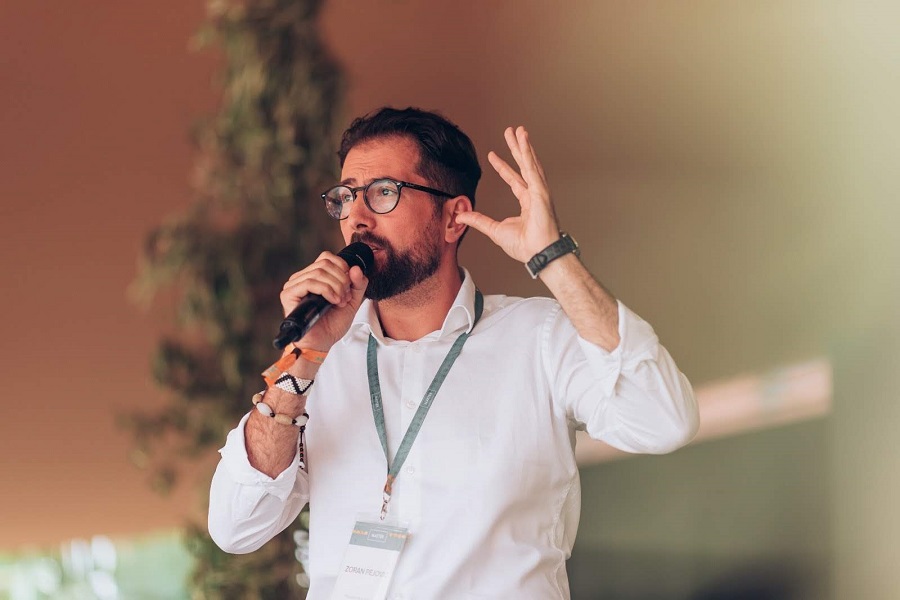
1. Take us back a decade. Paint a picture of Split as a destination. What attracted you to move there?
My decision to move to Split was a concoction of many different, unrelated global and personal events. It involved, among other factors “the coming out” of the global financial crisis, me having a best friend in Split, and my thoughts on how Split obviously must be the center of tourism in the Adriatic, given its geography, history, and culture. I have been coming to Split ever since 2001, and in those early years was always amazed and flabbergasted how most of the restaurants in the city center took August as their collective annual leave. Mind you, I was living in Dubrovnik back then, which was already doing very, very well, and the summers felt like a festival of tourism while Split was firmly outside of the tourist maps. However, in the years leading up to my move to Split, I was living across the globe and was very unfamiliar with the state of the industry.
I remember asking Marko, my partner to be in our common hospitality venture, if he could write up a list of the five best restaurants for me to visit on my arrival in Split, in December of 2011. I have asked the same for the wine bars, hotels, and so on. He came back with a list of three restaurants of which two were konobas, one hotel, and zero wine bars. I then asked him to ask his colleagues, all in the top management positions in Splitska Banka to write up their lists. They came back with the same lists. I was shocked and at the same time certain that Split had to be the next Barcelona. It was a platform that just had to be upgraded with the right mix of hotels, restaurants, and wine bars, and alongside the specialized destination management companies focusing on culture, adventure, and experiential offerings it was destined to be successful on all fronts.
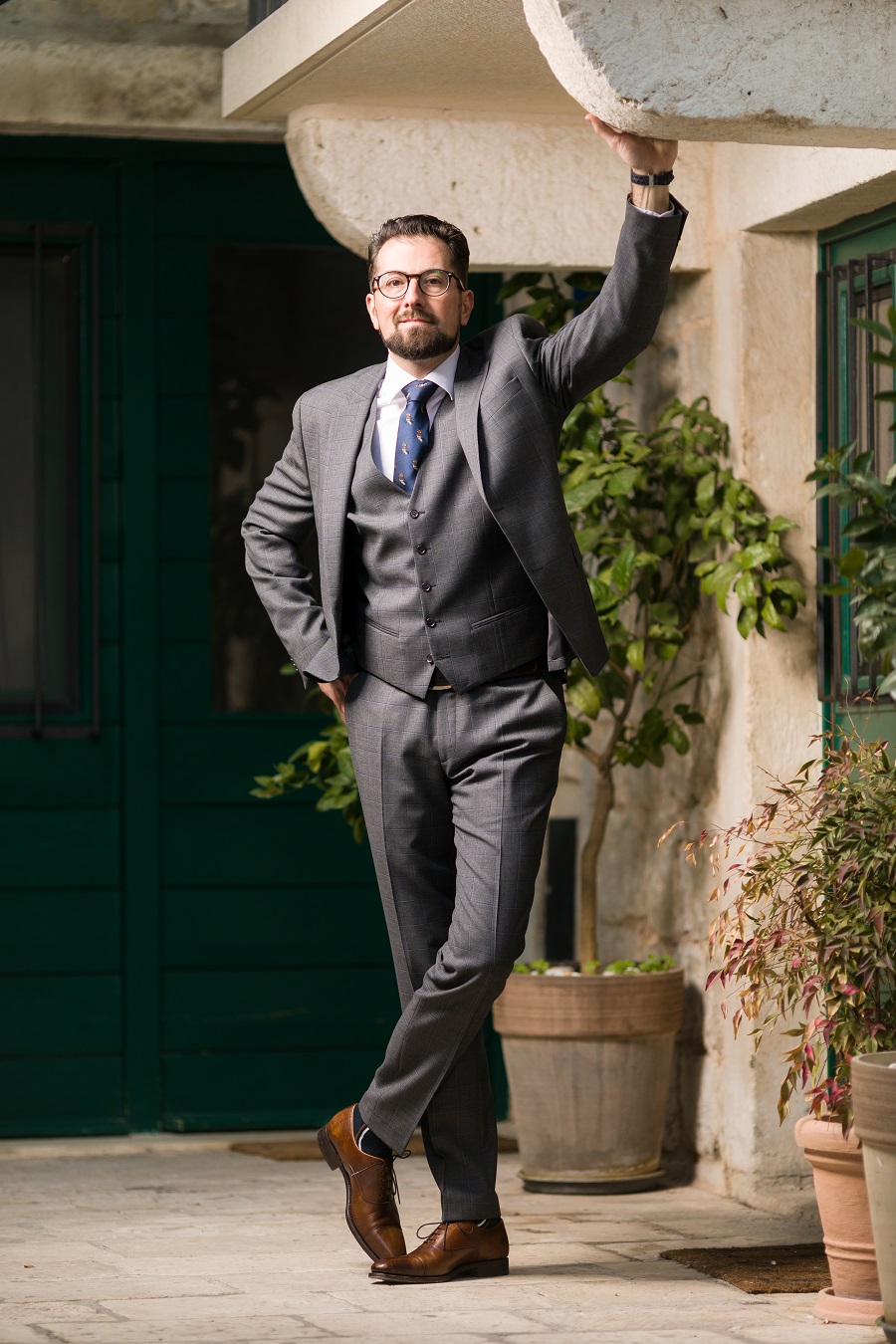
(Photo by Nikola Radovani)
2. You brought the wine bar to Split, a true pioneer. Tell us about that, and how things developed due to your initiative. Are you happy with the results?
Firstly, we could not have opened a wine bar, as such categorization did not exist within the rules and standards on classification, minimum conditions, and categorization of catering facilities. There was a pub as an option, mind you, not a wine bar. I don’t believe that has changed in the meantime. We have faced so many weird questions and constraints that we have decided to officially name our konoba, dressed as a wine bar, Konoba “Wine & Cheese Bar Paradox”. A lot has happened right off the bat. People thought that we were crazy offering 50 wines by the glass, but by the next summer, there were several new places with a similar concept, some even copying the menu to the t. The winemakers were very happy. I remember Andro Tomić telling us that if someone should be getting the government subsidies, it was people like us, not them, cause if we sold more wines, and promoted the wine culture better, they would do just fine. We had amazing support from the Hvar winemakers in those early days. Soon after, we started growing our loyal following in Split among the locals. We held hundreds of events over the years targeting the local wine lovers, expanding it later to wine and music lovers. And cheese as well, of course. Ah, that was another funny thing. We were ridiculed for serving cheeses with jams, but only for about two months. After that, it became the standard way of serving it all around.
I had some industry colleagues coming and sitting for hours in our wine bar and just observing how we were doing things. It was a very hopeful and promising period. I was working like a nutcase but was looking favorably into the future.
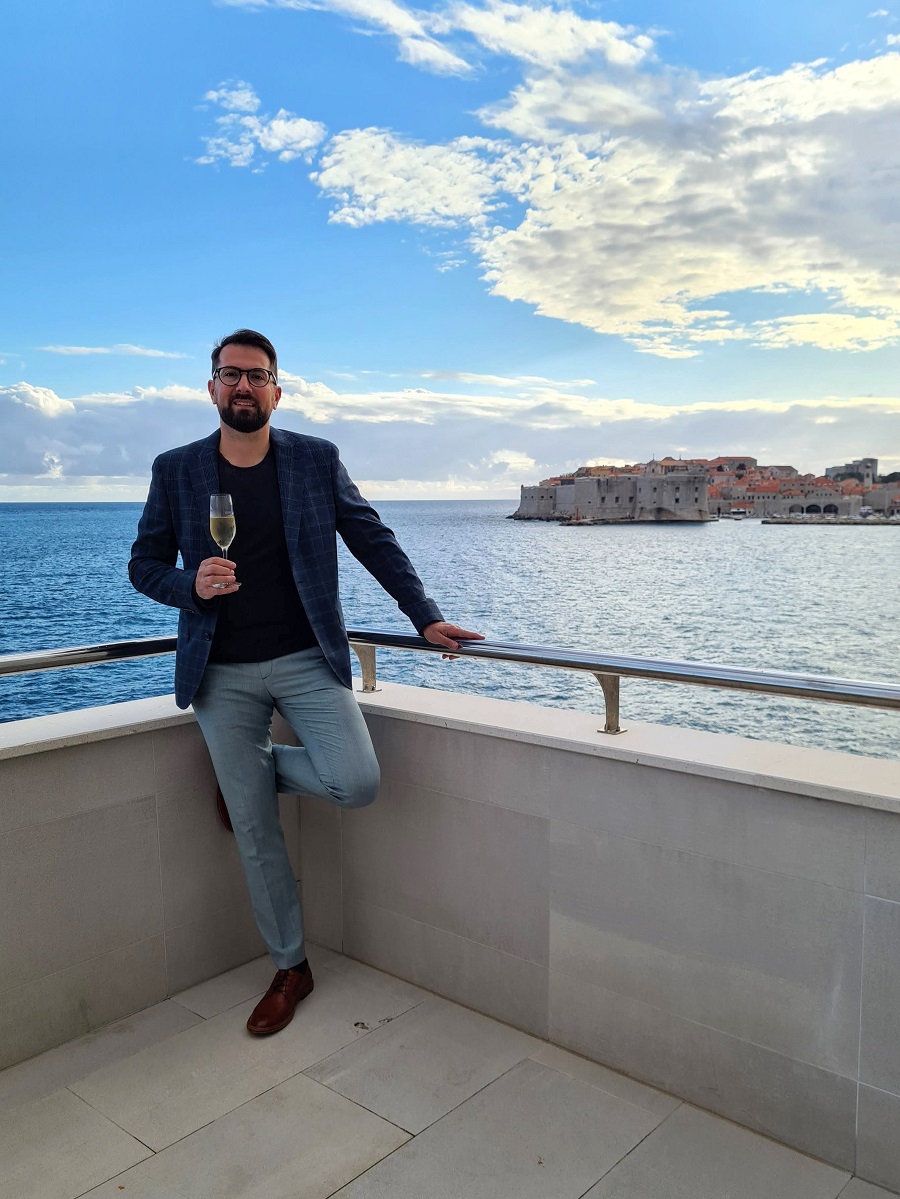
3. How do you see Split as a destination 10 years later compared to back then?
It is easy to call it a missed opportunity, but history does not move forward in such a linear direction. Things are way more complicated, and I refrain from offering simple answers to complex problems. There have been so many externalities that one could not have predicted back in 2012. Covid-19 is one example that many would cite as the defining global event of the past ten years. Another one, perhaps even greater than Covid-19 is the role of social media in the life of a destination, a restaurant, or a hotel, and that rise of influencing fast-changing trends. Then there is the entire change in the demographics on the side of the consumers, as well as on the side of the providers, and the industry, globally losing the appeal it had for many young people as the industry of choice. I could go on with the global changes that affected us full-on, despite us being on the map only tangentially in relation to the epicenters of those changes.
Then, you have a whole host of national externalities that are outside of the reach of Split’s jurisdiction, from well-documented administrative loopholes to the fact that the apartmanization has been seen as a sort of a social welfare system, avoiding the introduction of the property tax, and even taxing the apartment rentals at such a positively discriminatory rate, that any other investment seemed foolhardy. On the other hand, we have seen a roulette of tax codes in the restaurant industry moving from 22% to 23%, to 24%, to 25%, to 10%, to 13% to 25%, or some sort of that combination. Anyway, this is not to say that the local industry and the local politicians are not to blame, but truth be told, it was a whirlwind of learnings and failures on the part of the industry, with many having absolutely no previous experience and having to learn overnight in an often hostile environment, producing a barely edible, partially overcooked, but mostly undercooked mix of everything, garnished with a significant number of short-term speculators and a side dish of a non-edible mash of political shenanigans.

Sure, I would have loved to see how Split would have developed should Marjan have opened in 2014 or so, as announced back in 2012, bringing the large-scale yet upscale operation to the city with the greater off-season and MICE opportunities, with Hotel Amabasador following suit, with Bellevue being the flagship historical hotel, with Villa Rossina pushing the boundaries in the luxury villa accommodation, with some of the Žnjan hotels coming to life and so on. That could have pushed the city wider and longer, spatially, and timewise, relieving some of the pressure on the historical center as well as dispersing more travel to the low season.
To answer your question, Split of today is a mish-mash of everything, that attracts a mish-mash of guests, without clear destination branding, without the industry coming together in some cohesive manner, but a destination that yet can deliver over many decades to come.
4. Split has changed enormously in the last decade, with an explosion of tourism, a lot of it a younger crowd with access to cheap alcohol and pub crawls through the UNESCO World Heritage Site of Diocletian's Palace. What are your thoughts on this?
What can I say? It is not my crowd, and it is not how I develop my businesses, but these are the guests we have today, partially due to our failings, partially due to the pent-up demand among the young people being locked up for a couple of years. Some people are behaving like there is no tomorrow. This is more than a Split problem. As long as they are behaving within the legal bounds, I can’t fault them. I am not the one to throw moral judgments around. I don’t believe that drinking yourself into oblivion and losing memories tend to make people happy, but that seems to be the name of the game for many young people in these months following the two-year pause on social life. Some of it will go away naturally, some of it we will have to forestall with clearer communication, and some we will have to convert to different types of activities and tourism. That is the part that rests heavily on the shoulders of the industry leaders in the city.
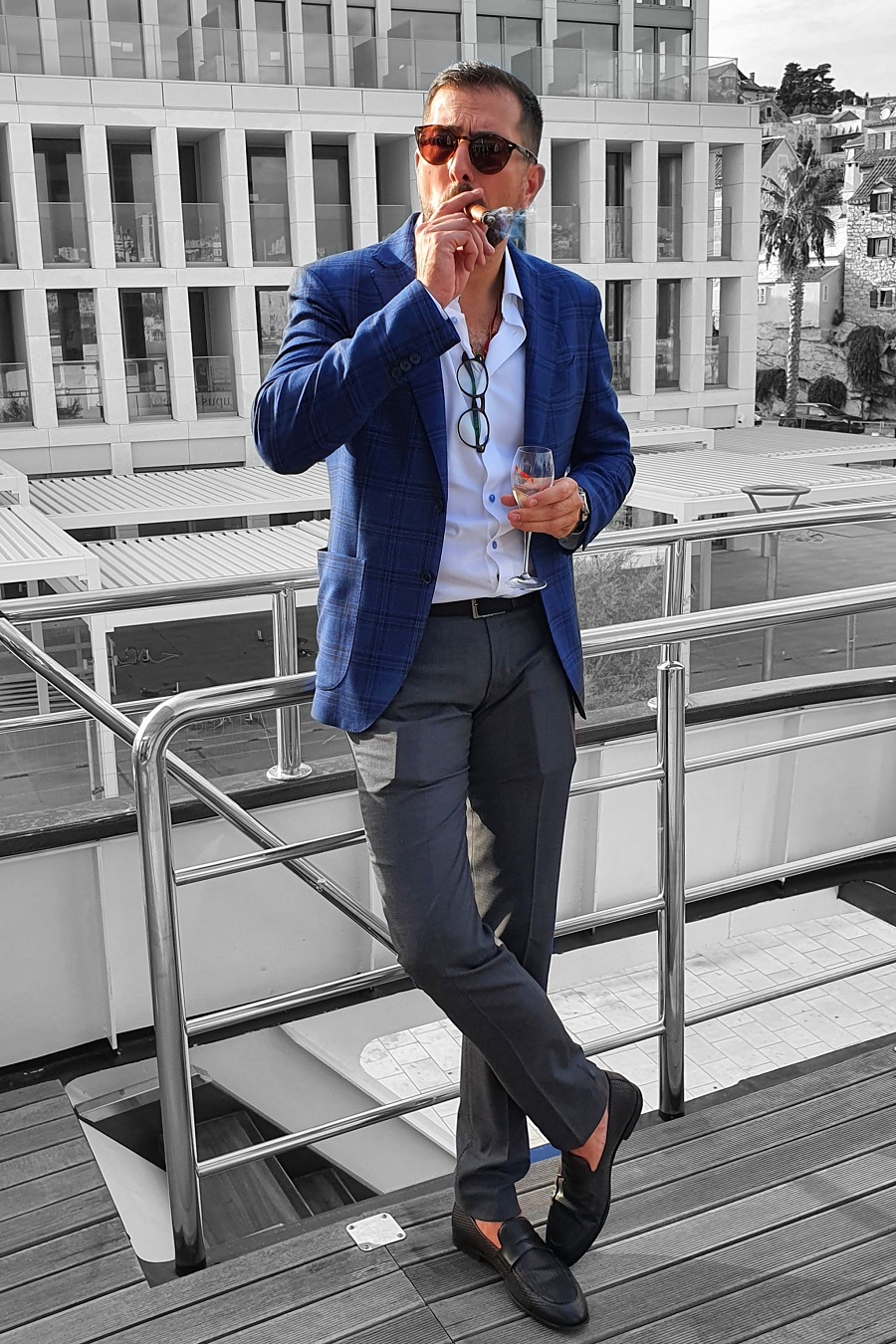
5. Several people point the finger at Ultra Europe for starting this. Do you agree? And if not, why not, and what is responsible?
That would be exactly what I said earlier, explaining the complex situation with a simple answer and pointing a finger at everyone’s favorite villain. I think that I have explained the confluence of different trends, externalities, and local failures in some detail already.
6. What kind of destination should Split be, and what is the ideal profile of tourist?
There is no such thing as the ideal profile of a tourist. Things change and evolve and what a typical upscale traveler looked like twenty years ago, how they look today, and how they will look like twenty years from now are completely different.
Split is not a little coastal town. It is the largest city on the Eastern Adriatic, and it needs to attract all different sorts of tourists and play on all of its main points of distinction, from the historical and cultural backgrounds to the extremely favorable geographical positioning, to sports, and music and gastronomy. Split needs to lead the way, and the only way it can achieve that is through education, formally with better hospitality schools, and informally through the successful stalwarts of the industry, aka internationally recognized hotels and restaurants that are pushing the boundaries of service excellence, firmly rooted in the continuity of living and sense of place that is our key point of distinction. We need local heroes of the industry, but also we know how Split treats its heroes often, so perhaps we skip that recommendation.
It takes decades to achieve this goal, while the goal keeps changing. I understand that this may sound like a word stew that means nothing, but that is the best I have to offer right now.
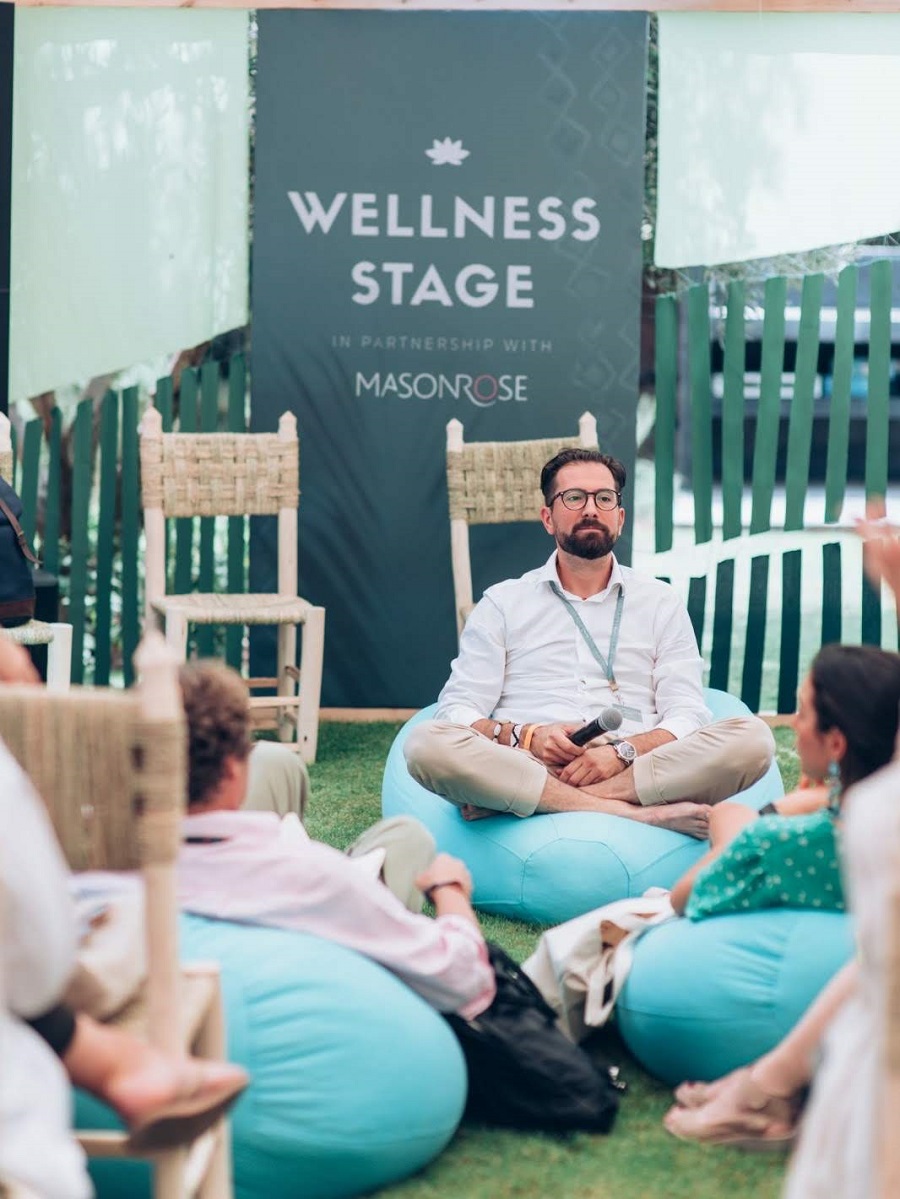
7. You are the Mayor of Split and Split Tourist Board director in one. Tell us what your strategy is to develop the city's tourism.
I will share these thoughts directly with the Mayor of Split.
8. 3 quick wins to improve the current situation?
If you are referring to the recent scenes from the historical center of Split, that can be partially mitigated with a clear communication campaign, meetings with the stakeholders that are propping up this behavior, and enforcing stronger rules with better policing. However, that is not something I think about that much. I am much more concerned about the ways in which we can regain some of the attractiveness as the industry of choice, especially for the young people, which largely sit on the shoulders of the industry; how can we attract more mindful hotel developers, with long term vision and respect for the local community to invest in our city; and how can we fix the existing infrastructural challenges that are causing the same pains for the local and the tourists alike. The other two aspects are something the industry without the help of politics can’t achieve.
9. How do you feel about the direction of Croatian tourism? Is it on the right path?
Someone once said that it is better to use a compass than a map to reach the destination. Well, we never had a map, and the compass is often broken, so we are a bit lost in the storm of other people’s making, and our inability to take control. We are kind of heading in the right direction, but moving very, very slowly. Some people have shown us the way. Here I mostly speak of the winemakers, olive oil makers, and to an extent, the cheesemakers. You might wonder why I bring the world of agriculture when we talk about tourism, but that is exactly our point of distinction: tourism that is born out of agriculture, and the one we don’t see yet, and I hope we get to see, agriculture born out of tourism.
And education, of course, education…
10. And finally, what is Zoran Pejovic working on next? I know you can't sit idle for long...
There is so much going on, some days I feel like I am on a rollercoaster of calls and meetings on future projects. I might have to venture outside of Croatia for a bit, most probably Norway and the USA, as the projects that are in the pipeline in Croatia are just too far in advance for me to make my living, especially given the past two years and the capitulation of our Split ventures under the weight of the external pressure, Covid-19 closure and our lack of readiness to gamble away our reputation through cost cutting, employee reductions and overall compromise of quality, coupled with the internal inability to carry on financing the old ways indefinitely. There are a lot of scars from the past two years, so some international exposure is needed to expedite the healing process, before returning to deliver another flagship project to Croatia, the way we delivered Maslina Resort on the island of Hvar, or the way Paradox and Paradigma led the way in the development of Split’s wine and gastronomical scene.
You can follow Zoran Pejovic on LinkedIn or find him on the Paradox Hospitality website. He is also an occasional contributor to TCN and wrote some excellent articles about tourism during the pandemic.
Read more on the current state of tourism in Split:
Is Split Tourism 'Strategy' Killing the Goose with the Golden Eggs?
ULTRA Europe Festival's Joe Basic Talks Split Tourism Development.
****
What is it like to live in Croatia? An expat for 20 years, you can follow my series, 20 Ways Croatia Changed Me in 20 Years, starting at the beginning - Business and Dalmatia.
Follow Paul Bradbury on LinkedIn.
Croatia, a Survival Kit for Foreigners will be out by Christmas. If you would like to reserve a copy, email This email address is being protected from spambots. You need JavaScript enabled to view it. Subject 20 Years Book
Need A Tourism Break? Five Ways to Escape the Summer Crowds in Split
August 6, 2022 - If you're looking for a break from the summer crowds in Split, we don't blame you. But that doesn't mean there aren't ways to escape.
Split tourism has been a bit... different this summer. With crowds larger than ever (it seems) and very little control over them in the UNESCO-protected center (you can read more about that here), the Split tourism bomb has well and truly gone off this season, and we still have a ways to go.
With travel returning after the pandemic and a season that started earlier than ever, it's felt like summer in Split since Easter - with sunny and warm days to boot. But Split's historic core isn't necessarily adapted for hordes of tourists (we don't think Diocletian had this in mind), making the center almost unbearable at times as swarms of sweat-drenched travelers make their way through narrow cobblestone streets.
Fortunately, Split is much larger than its Old Town, and if you want a break from the buzz, we have you covered.
So, how to beat the crowds in Split?
Marjan
Okay, we know this is a foolproof answer, but that green hilltop known as the city's lungs actually serves a great purpose for those looking to stretch their legs in nature. Best in the early morning for a hike up the hill, followed by coffee with Split's best view from Vidilica, or at sunset for a swim at many of its beaches, Marjan has always been a go-to for locals looking for a slice of peace during summer tourism chaos. Rent a bike to ride around, strap on your walking shoes for a sunset stroll, or post up at Bene beach for the day surrounded by pines and the buzzing of cicadas.
Shopping malls
Did you know that Split has 3 (air-conditioned) shopping malls, all a short drive outside of the city center? We know that shopping malls might not necessarily be high on your list when you're here to visit a 1700-year-old Roman masterpiece, but if you're looking for a break from sightseeing and need a minute to cool off, Split's shopping malls are not a bad place to be. Joker is the closest to the city center, about a 15-minute walk (which we don't suggest in this heat) or a 5-minute taxi ride. Mall of Split and City Center One are a bit further outside the center but still less than a 15-minute drive. Not only does each shopping mall offer an array of brands, but you'll find extra-air-conned cinemas, content for kids, and fun food courts. Again, we know it isn't the best option, but desperate times call for desperate measures when it's 35+ degrees Celsius. Treat yourself.
Bura Line - Slatine
My favorite getaway this summer is hopping on the 9:30 am Bura Line and heading to Trogir for the day. But only because my parents live nearby. Trogir is no better with crowds this summer, but one stop on the Bura Line is still a safe haven this summer - Slatine on Čiovo Island. A 30-minute boat ride from Split to Slatine has you on the beach in no time - and for only 30 kuna! This small fishermen's village and low-key tourist resort located on the northeastern side of the island doesn't have too much to offer. However, it boasts several stunning beaches, the most beautiful of which is Kava, just 1 kilometer from Slatine town. The Bura Line offers four connections daily in the high season, allowing travelers to comfortably spend the day away from Split.
Museums
Tourists may not take enough advantage of Split's museums, and there are many to explore. Split's most prized museum is undoubtedly the Meštrović Gallery, located around the bend from Sustipan park and conveniently behind Ježinac, allowing visitors to mix the work of 20th-century sculptor Ivan Meštrović with a swim. And if you are looking for something more central? Don't miss the interactive and immersive Museum of Illusions, or stop by Split's oddest institution - Froggyland. Who knows, you may discover a new love for taxidermy frogs? Pro tip: If you're looking for a quick but unmatched Virtual Reality experience of Split and its fascinating Roman history - you'll need to set aside 15 minutes for Diocletians' Dream!
Day trips
We know you're here to visit Split, but its surroundings are spectacular and shouldn't be missed. If you want to keep it local, head to the ancient ruins of Salona in the town of Solin, easily reachable by Promet bus from HNK (to Širina) or taxi (both around 15-20 minute ride depending on traffic). Klis Fortress is also just 12 kilometers outside Split and reachable by local bus or taxi. Open every day from 8:30 pm to 10 pm, don't forget that your ticket price also includes a visit to the Interpretation Center at Mejdan Square and the Stella Croatica ethno-agro park, where you can taste homemade olive oil and local traditional products for a 'multi-sensory experience of Dalmatia’s heritage.' And should you get really hungry? The Stella Croatica tavern offers local Dalmatian dishes served in the courtyard of the estate’s central square!
For more, make sure to check out our dedicated travel section.
Split Tourist Traffic: 49,000 Air Passengers, 62,000 Ferry Passengers this Weekend!
July 2, 2022 - It's no surprise that Split has been busy, but just how packed the bustling Dalmatian city is can be seen in the Split tourist traffic this weekend. And Ultra Europe isn't even here!
Split Airport expects 49,000 passengers on 205 planes this weekend, while more than 62,000 passengers and 13,000 vehicles will pass through the ferry port, reports Jutarnji List.
Mate Melvan, the head of the reception and dispatch service at the Split Airport, said that 205 planes and 49,000 passengers are expected at Resnik this weekend.
He reminded us that the Ultra Europe music festival starts next week and that they expect travelers from more than 140 countries worldwide. Intensive preparations have already begun, and they believe the traffic will be even greater, as the influx of passengers has been noticeable for days.
"We can say that the traffic is reminiscent of 2019, which was a record year in terms of the number of tourists, that is, we are certainly at the level of that year, and according to the announcements, even higher. It is important to see how the problems at airports around the world and flight cancellations will develop. Certainly, from today until the end of July, we expect between 20 and 30 thousand passengers per day," announced Melvan.
He added that they expect between 25 and 40 private planes to land at Split Airport this year because of Ultra, which will bring many DJs.
More than 62,000 passengers and 13,000 vehicles will also pass through the Split city port this weekend. Jadrolinija coordinator Jelena Ivulić says that on Friday, in addition to many regular lines, they also had an extra line to Supetar. While they are running all regular lines today, given the great interest of passengers, an extra line to Brač could sail by the end of the day.
"The situation in the port is such that all our ferries are full on all routes. Therefore, I can freely say that the crowding in the port is constant, and it continued today," Ivulić pointed out.
You can see photos of the crowds in Split on Jutarnji List.
Split-Dalmatia County Overnights at 80% of 2019, High Demand at Split Airport
May 30, 2022 - Split-Dalmatia County overnights and Split Airport flight traffic have hit 80% of the record 2019!
"We are only at the end of May and in the middle of an extended weekend. Nevertheless, all tourist indicators tell us that from the beginning of the year to the end of May, we are at around 80% of traffic in terms of overnight stays compared to 2019," said Joško Stella, director of the Split-Dalmatia County Tourist Board for HRT.
"If we looked at 2021, we have three times more overnights than last year. So we have excellent bookings for the peak season," he pointed out.
As for guests, domestic tourists make up about 10% in Split-Dalmatia County, and the increase in prices will affect this.
"We hope that prices will not rise too much," Stella said.
Stella added that they had made a master plan for tourism development, and their main goal is sustainable tourism with the help of the local population. They have already taken some actions, and they know how much they can burden local tourism during July and August.
Stella concluded that he expects to get very close to the 2019 results, but it is more critical for them to take care of tourism sustainability.
The head of the Passenger Reception and Dispatch Service of Split Airport, Mate Melvan, was a guest on Dnevnik N1 on Sunday.
He pointed out that they are delighted with the traffic this extended weekend, after which there are about 140 aircraft and approximately 34,000 passengers.
"Compared to previous years, we are now at about 80 percent compared to 2019, and the goal is to reach 2019. However, compared to last year, we are significantly in the black; it is best to forget," Mate Melvan told N1.
Commenting on the impact of inflation and the war in Ukraine on price growth, he added: “Airlines are under pressure due to the crisis, but it is not affecting high demand so far, and we are looking forward to it. Figures show that we could reach the 2019 figures in July and August. 45 to 50 airlines have announced flights. It turns out that the demand for Split is growing."
For more on travel in Croatia, follow TCN's dedicated page.
Split Destinations You Can Visit Using Public Transport
May 24, 2022 - You can spend a large part of your itinerary in the city centre, but did you know that you can get to know many interesting Split destinations by bus? We're going to show you how.
Whether it is a short visit or for a week, the City of Split can fill your itinerary with activities of all kinds, sights, gastronomic spots, and much more. But what if you feel the need to explore your surroundings? Surely from the window of your plane, shortly before landing, you noticed that Split is much more than just its centre. In the high season, you may want a little respite from the crowds, so why not explore some of the nearby Split destinations? By using public transport, you can save yourself the fees of renting a car to visit these relatively local destinations, as well as the tedious search for parking in the city.
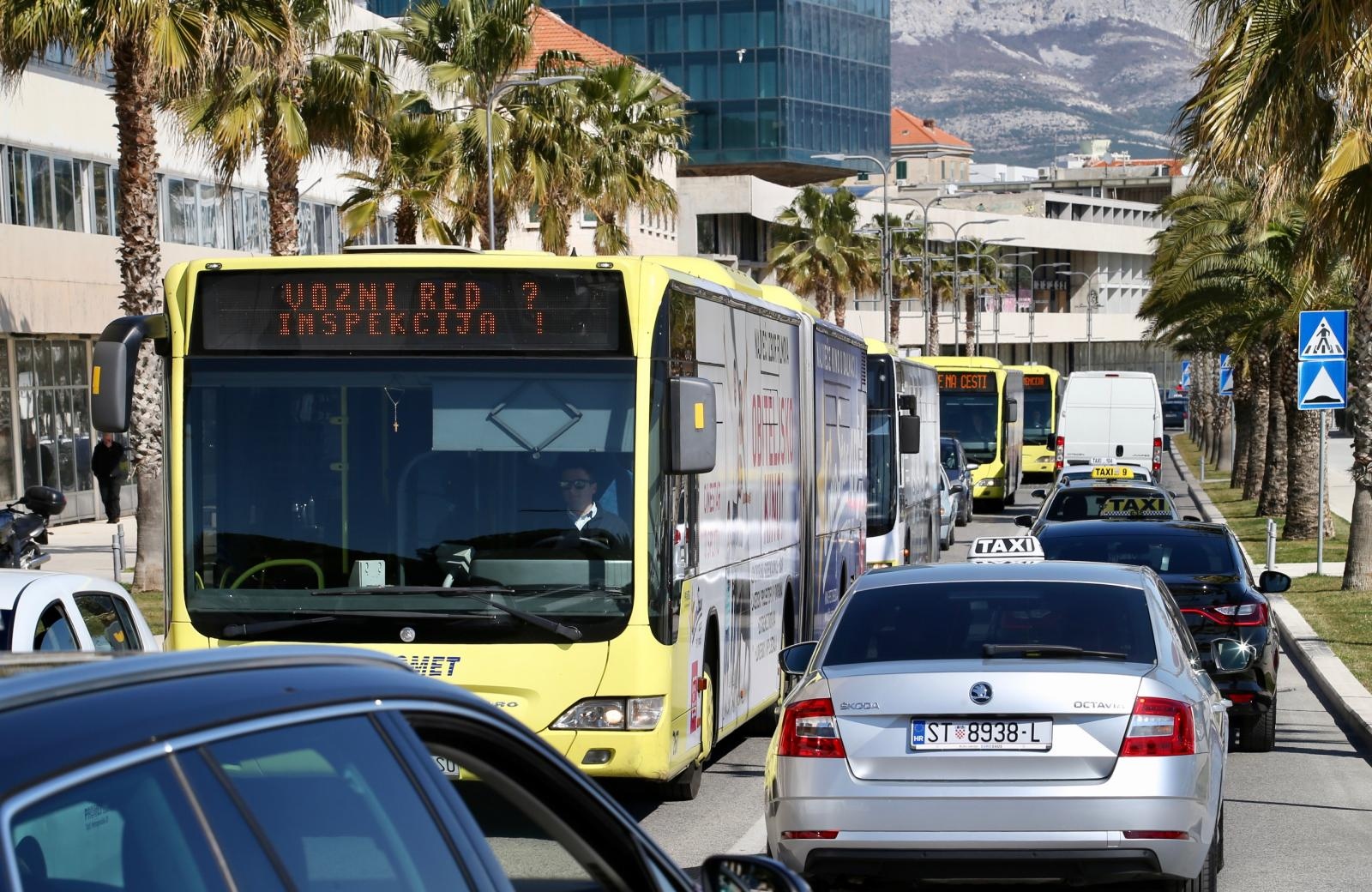
Photo: Ivo Cagalj/PIXSELL
The public transport system in the City of Split is called Promet (Traffic) and its buses can take you beyond the centre. The bus network is divided into four zones, and that is how ticket prices are determined (based on proximity to the very centre). If you're very clear about where you're going, you can buy your tickets at the Tisak stands indicating the area you are going to, or you can also pay the bus driver himself, indicating the exact destination you are going to.
The prices of bus tickets by zone are as follows:
Zone 1: 9 kuna
Zone 2: 13 kuna
Zone 3: 17 kuna
Zone 4: 21 kuna
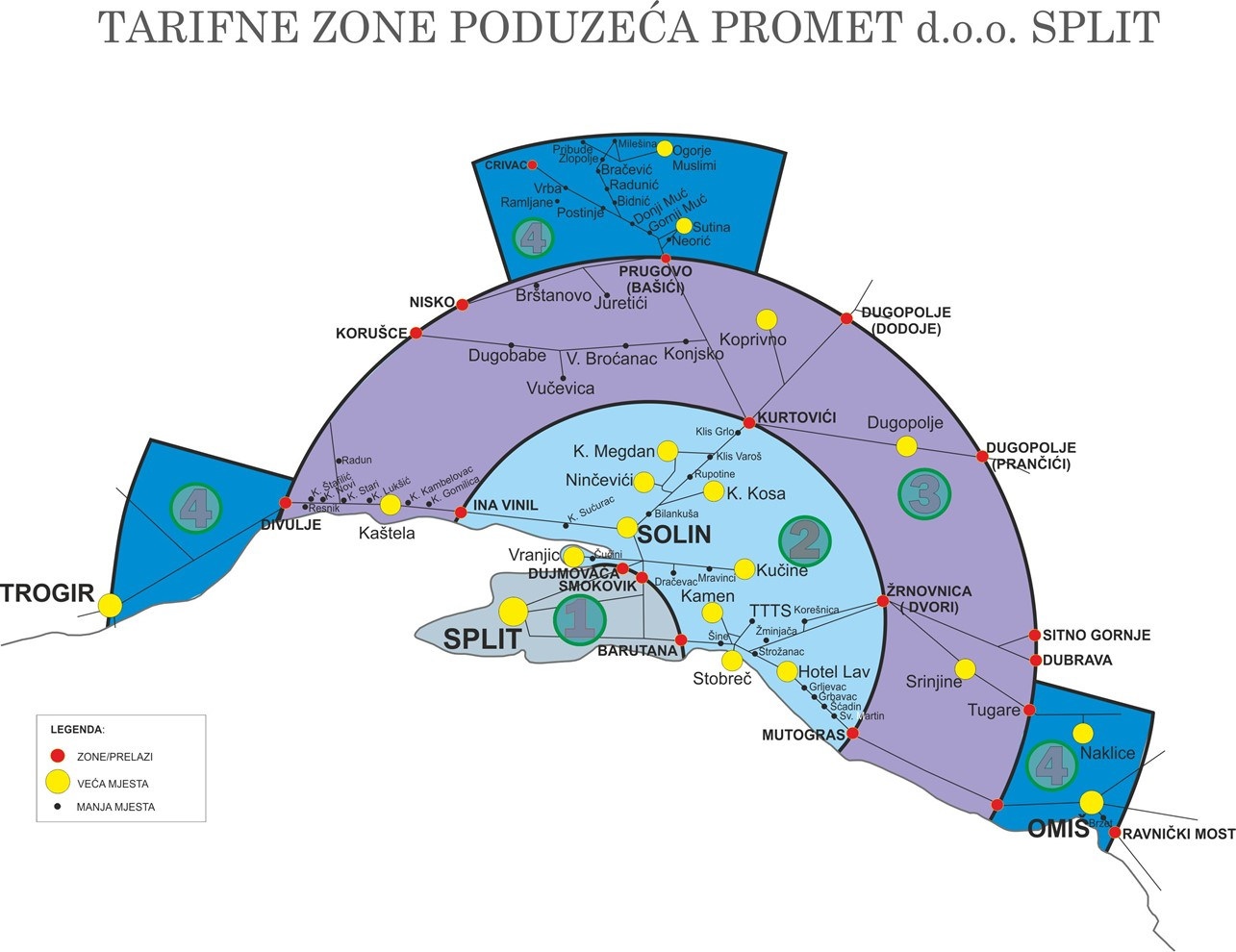
Image: Promet Split
Now, the question is, where do you want to go? Generally, everything in the centre of Split is part of Zone 1. You can choose between beautiful and less crowded beaches, small and picturesque old settlements, or even historical places beyond that zone. The choice is yours. Here are some ideas for Split destinations you can visit in zones 2, 3 and 4 with the city's public transport system.
ZONE 2
Solin
Solin is located very close to the centre, just northeast of Split. Originally called Solana, it was a Greek colony founded in the 3rd century BC, and later a Roman colony. At that time, it ended up becoming the fourth largest city in the entire Roman Empire. For a zone 2 ticket to Solin, you can go ahead and visit its impressive ruins. You'll need to get on bus number 2 (Split - Poljička - K. Sućuraj (Strinje) - Split Airport), or bus number 38 (Split - K. Stari - Resnik).
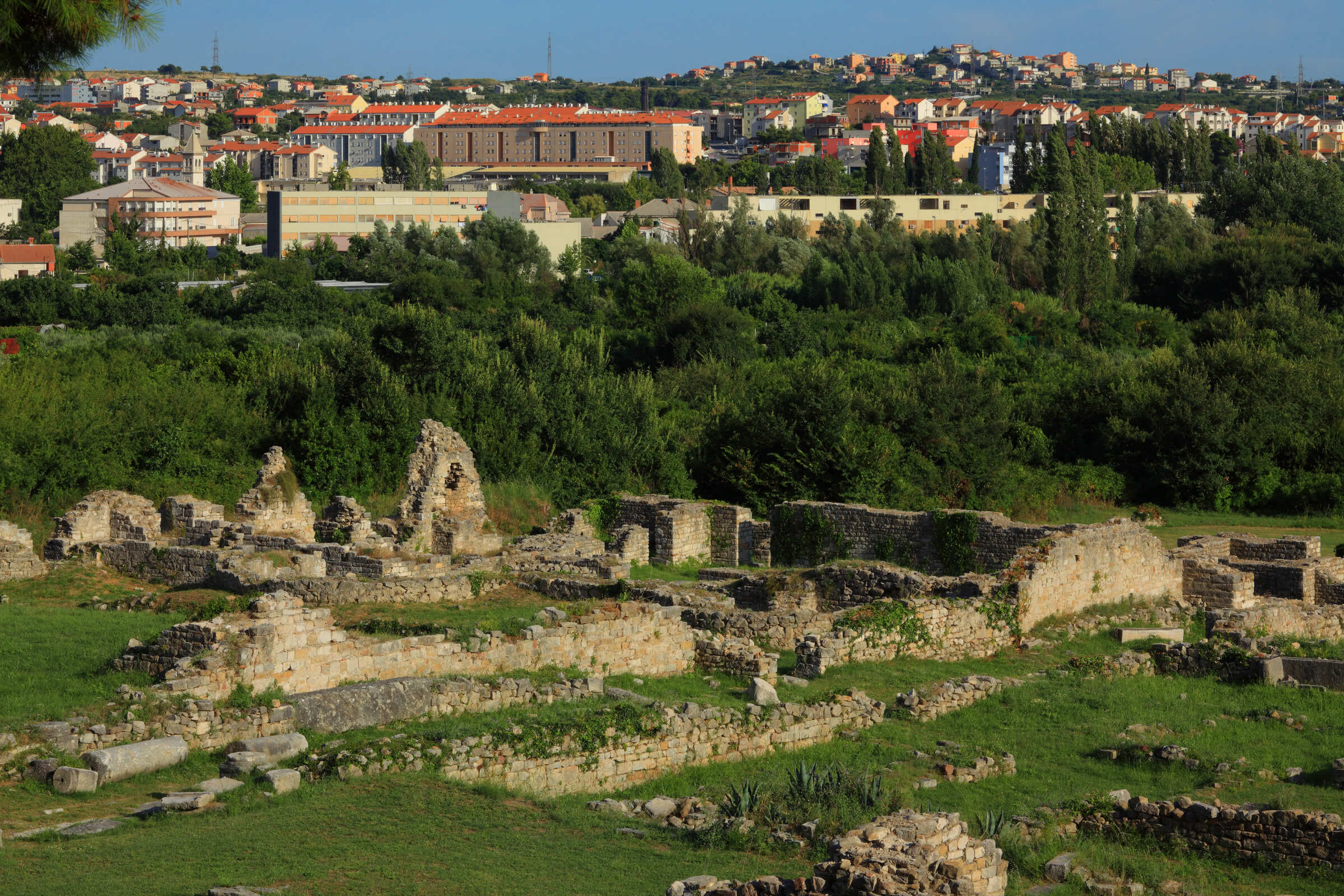
The ruins of Solin. (Photo: Mario Romulić)
Stobreč
On the southern loop of Split zone 2, Stobreč is the first destination you can get to. It's ideal if you are looking for somewhere nearby to relax and with a good number of bars and restaurants. Stobreč also has a golf course, if that's your thing. You'll need to get on bus number 60 (Split-Omiš) or number 25 (Split-Stobreč).
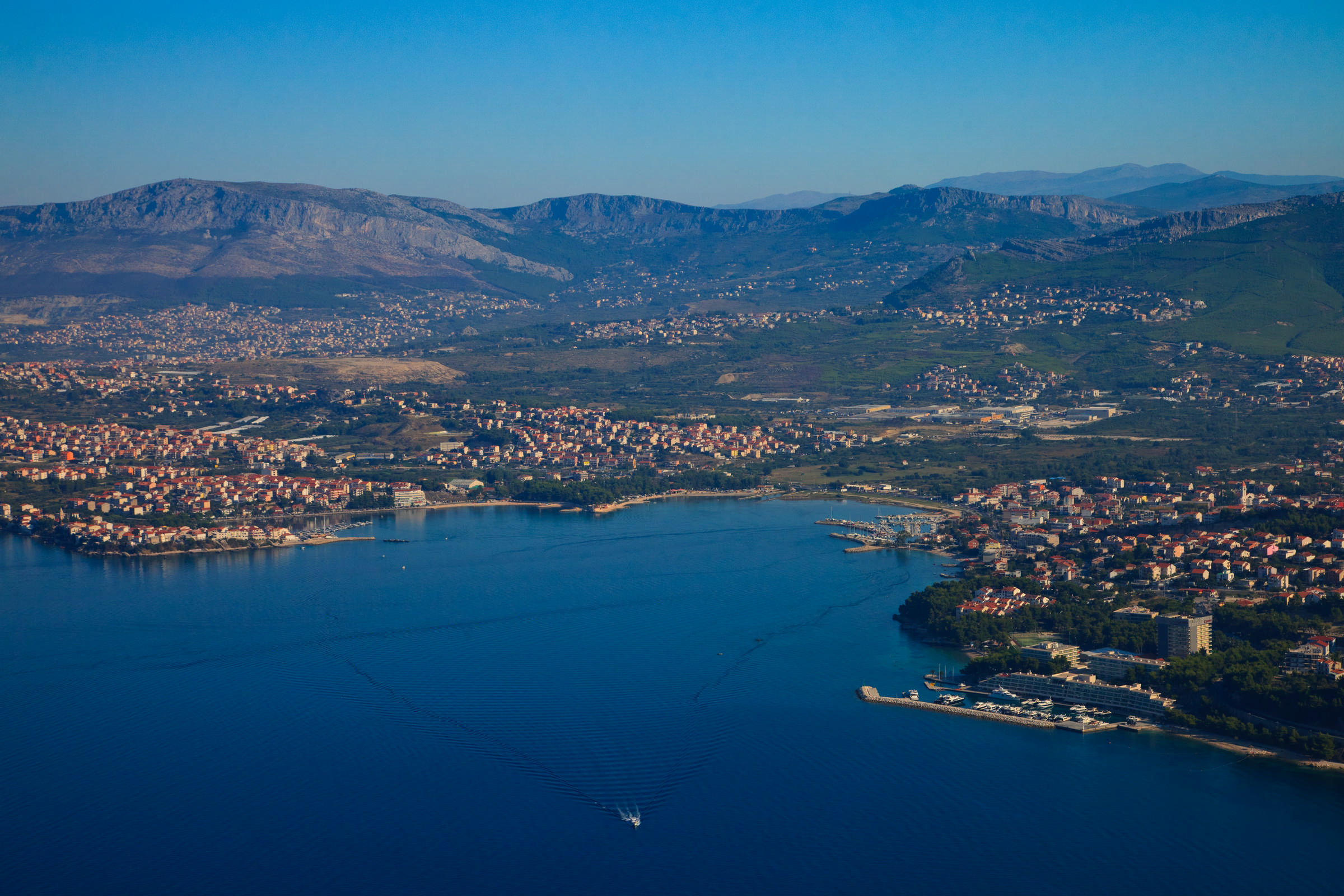
Overview of Stobreč. (Photo: Mario Romulić)
Podstrana
Passing Stobreč, you'll reach Podstrana. Podstrana has a large number of beautiful beaches, with bars and restaurants on them. I always say, if you are looking to enjoy the sea in Split and away from the crowds, go to Podstrana. If you're looking for something other than the beaches, you can also go hiking in the surrounding hills or kayaking on the Žrnovnica river. Did you also know that legends say that Podstrana is where the famous King Arthur could have been buried? You'll need to get on bus number 60 (Split-Omiš) to get here.
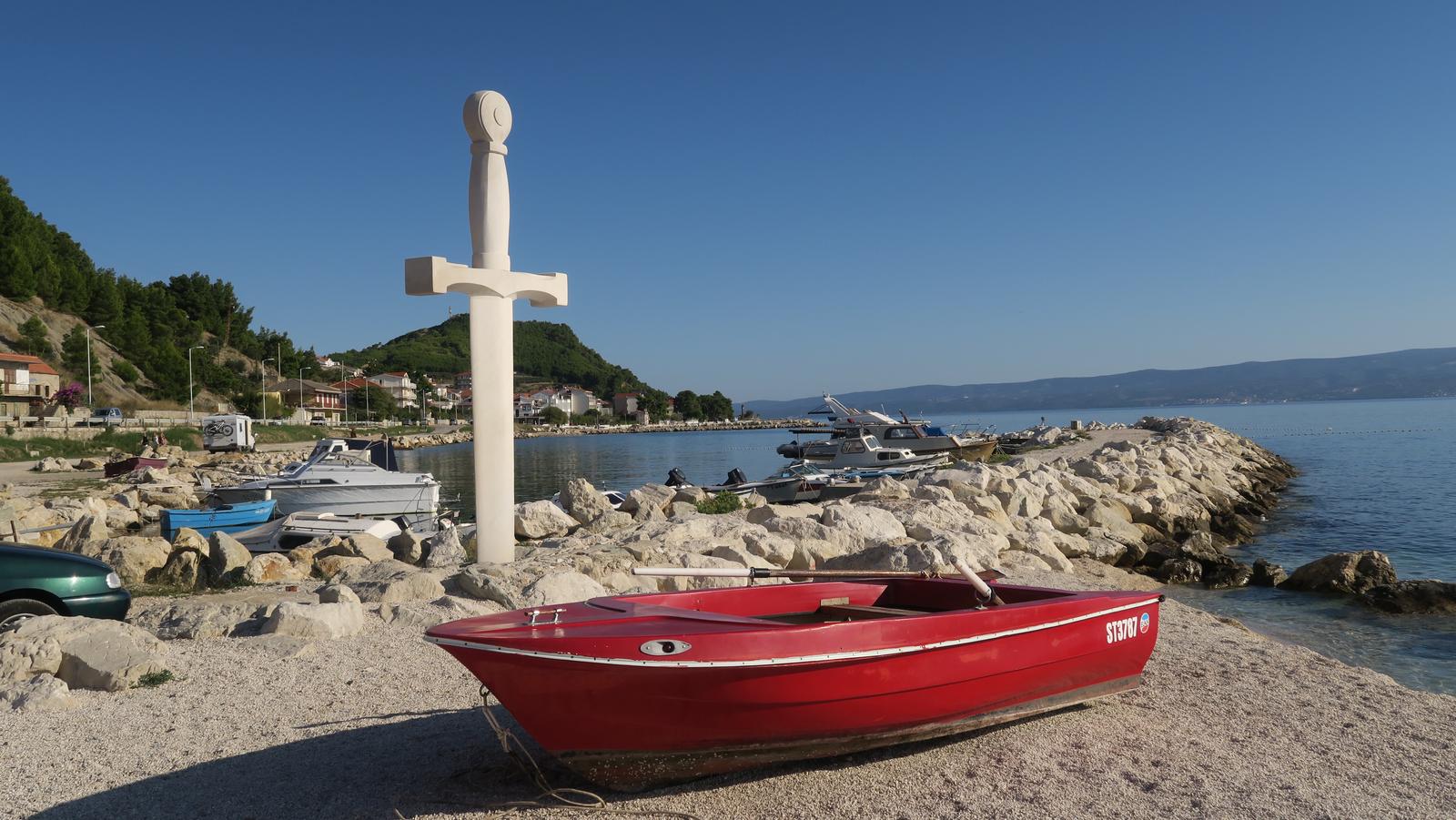
The sword of Artorus, in Podstrana. (Photo: Ivo Cagalj/PIXSELL)
ZONE 3
Kaštela
Please note that there is more than one Kaštela! It won't be something that will have much relevance when paying for your ticket, since they're all in the same area. Kaštela is located northwest of Split, on the way to the airport. No matter which Kaštela you decide to go to, be sure to enjoy its promenades, beaches, and marinas! You'll need to get on bus number 2 (Split - Poljička - K. Sućuraj (Strinje) - Split Airport), or bus number 38 (Split - K. Stari - Resnik).
Krilo
If you pass Podstrana, heading south, you will enter zone 3. There are many places that you can visit almost in succession: Mutogras, Jesenice, Sumpetar, Dugi Rat... Krilo has very nice beaches, as well. You'll need to get on bus number 60 (Split-Omiš).
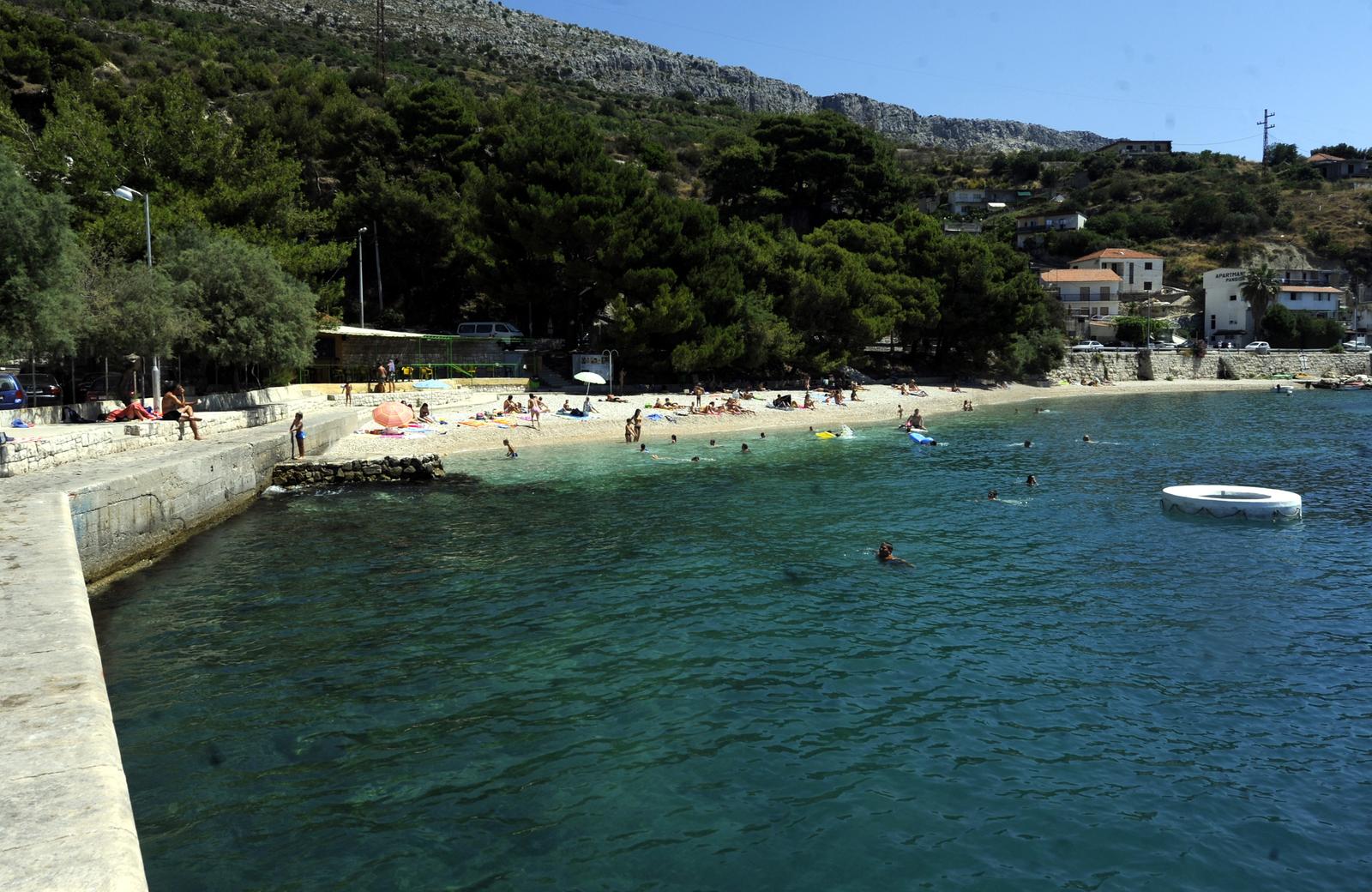
Krilo. (Photo: Tino Juric/PIXSELL)
ZONE 4
Duće
Duće is one of the last destinations in zone 3 to the south. Many continue on to Omiš, but Duće is a place that deserves all your attention for its beautiful beaches and camping sites. You'll need to get on bus number 60 (Split-Omiš).

At the beginning of Zone 4, just before Omiš, you'll find Duće. (Photo: Mario Romulić)
Trogir
Passing the Split Airport, you'll find the very ancient and picturesque town of Trogir. Often regarded as the miniature version of Split, its beautiful promenade and narrow streets will stick in your mind for a long time. A good idea is to find pristine beaches in the bridge-connected island of Čiovo. You'll need to get on bus number 37 (Split - Split Airport - Trogir).
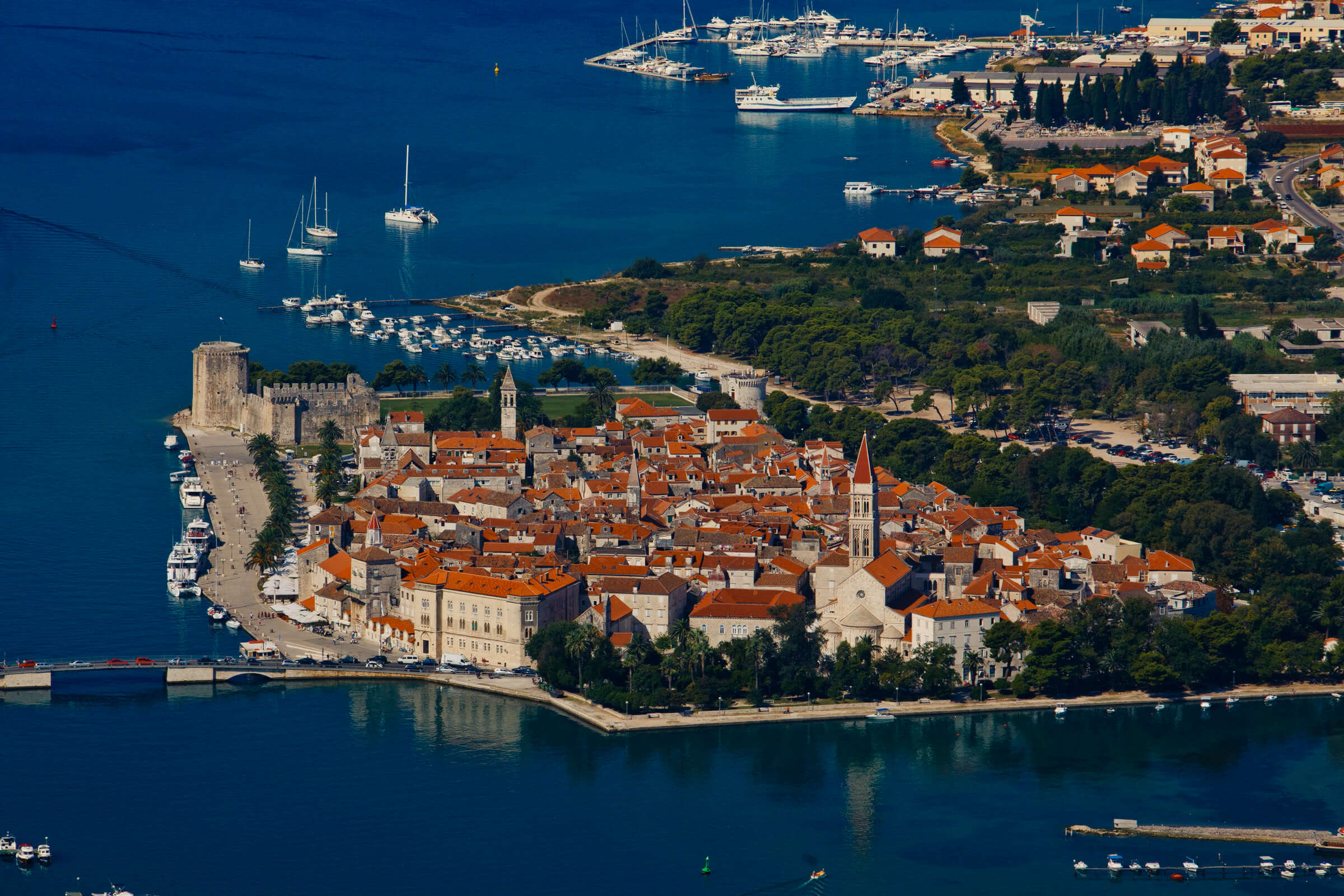
Trogir. (Photo: Mario Romulić)
Omiš
Omiš is one of the most popular and largest towns on the coastal road between Split and Dubrovnik. Just 40 minutes from the center, Omiš is a true jewel of the Dalmatian coast, with beautiful old streets, the Cetina canyon, and wonderful beaches. You'll need to get on bus number 60 (Split-Omiš).

Omiš. (Photo: Mario Romulić)
For more information on Split's bus system, be sure to check the official website of Promet.
For more on travel in Croatia, follow TCN's dedicated page.
2022 Split April Tourism Figures Slightly Behind Record 2019
May 13, 2022 - If you're currently in Split, you know it's been busy - and quite frankly, it's felt like the season started in April. A look at the 2022 Split April tourism figures, which are slightly behind the record 2019!
The Split tourism figures in April this year are about five times better than the same month last year. Namely, in the previous month, Split counted 38,658 arrivals, including foreign and Croatian visitors, who achieved127 thousand overnight stays, while in April last year, which was still conditioned by numerous epidemiological measures, Split recorded only 8,231 arrivals and a total of 29,667 overnight stays, reports Slobodna Dalmacija.
Although the visitor numbers for 2022 are excellent compared to the previous year, they still had not reached the record in 2019, when there were 59,495 arrivals and 150,735 overnight stays in April. But we are not that far behind.
According to the Split Tourist Board data, Germans, Americans, English, French, Dutch, Irish, Spaniards, Swiss and Finns were among the most tourists in April. Ukrainians achieved 9,159 overnight stays in 715 arrivals in April, almost 12 times more than in April 2021, when only 61 arrivals and 283 overnight stays were recorded. The sudden jump, of course, is attributed to the current state of war in their country.
Foreign visitors make up the majority of tourist traffic in Split. Thus, in April this year, Split was visited by about 30 thousand foreign tourists and about seven thousand domestic tourists.
In April 2021, domestic and foreign visitors were the same, or around four thousand, but a considerable difference is noticeable in the number of overnights spent. Although an equal number stayed in the city during that period, foreigners spent 20,000 nights, and locals spent about 9,000. In 2019 it was around 52 thousand foreigners and 7,000 domestic tourists.
The Split Tourist Board also hopes for the tourist season to continue with positive numbers.
"From the beginning of the year until today, over 90,000 tourist arrivals and almost 300,000 overnight stays were realized in Split, which is three times higher tourist traffic than the previous year. Moreover, suppose reservations and announcements from target markets are achieved. In that case, we believe that the growth trend continues and that we have a successful July ahead of us and the rest of the tourist year," said Alijana Vukšić, director of the Split Tourist Board.
For more, make sure to check out our dedicated travel section.
DalmatiaNFT: Split-Dalmatia County Officially Steps into Metaverse
April 20, 2022 - The Split-Dalmatia County Tourist Board has launched the Tourism 3.0 project, integrating the tourism sector into the Metaverse with DalmatiaNFT.
The Split-Dalmatia County Tourist Board will hold a ceremonial presentation on the project Tourism 3.0 - a revolution in applying augmented reality technologies in presenting the tourist offer of the destination. The presentation is scheduled for April 21, 2022, at 10:00 am at the President Hotel in Solin, and at the event itself, guests will step into new ways of social interactions of the future.
In a world that is constantly evolving and changing for all individuals and structures of society, there are changes in the preferences and interests of tourists. Knowledge and innovation are becoming a key source of sustainable competitive advantage. It is essential to keep up with technology and use all the power of today's communication channels.
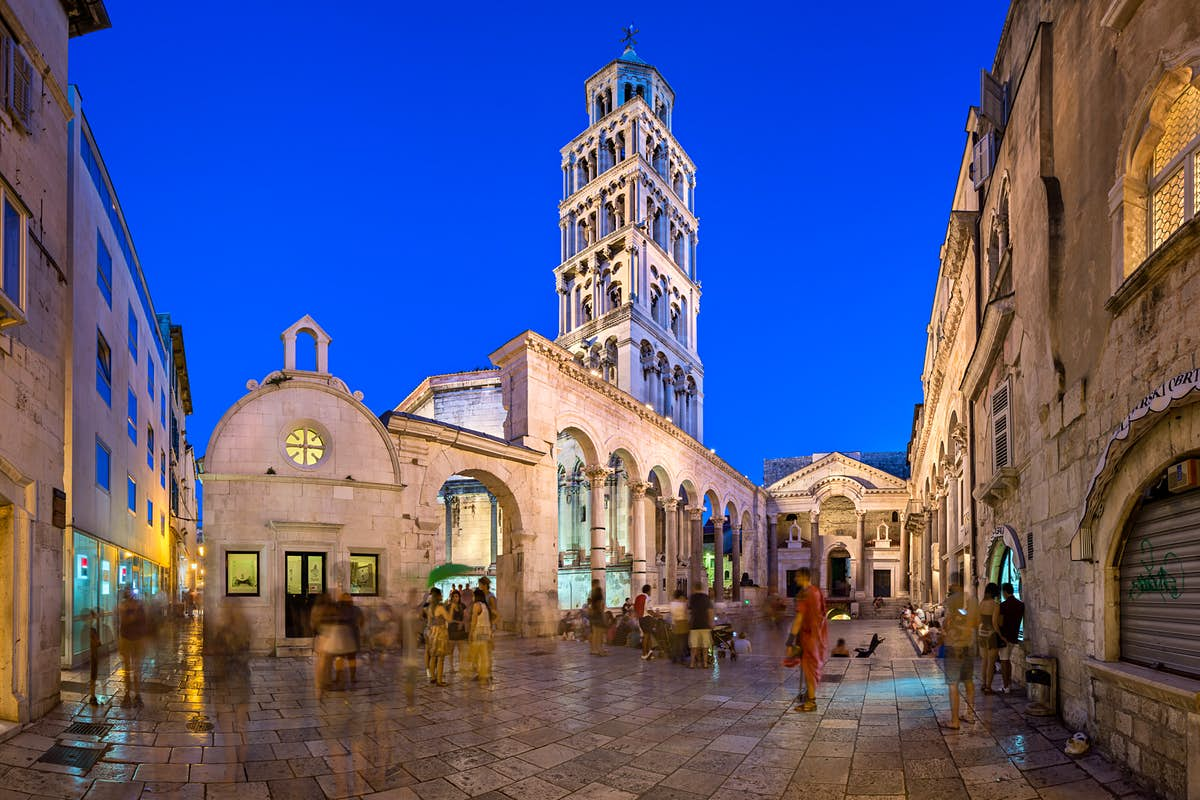
Only dynamic organizations which can assess the needs of their stakeholders and respond effectively to those needs will be able to outperform their competitors and maintain their long-term prosperity.
For this reason, the Split-Dalmatia County Tourist Board has launched the Tourism 3.0 project, whose name symbolically represents the integration of the tourism sector into the third phase of technology evolution and the virtual Metaverse world.
This project outcome will be achieved by implementing a hyper-relevant system for the distribution of NFTs (Non-fungible Tokens) in the tourist offer of Central Dalmatia within the concept of a virtual world called Metaverse.
Virtual reality is part of a new reality in tourism - an embodied internet in which you are the creators of experiences, not just observers.
As one of the answers to the crisis, digitalization in tourism means introducing new technologies such as virtual reality (VR). Virtual reality will be necessary as a promoter and in the preparation of travel, the conservation of resources, and the protection of cultural and natural assets.
"We recognize the portrait of the future traveler who seeks safety and untouchable access and feels a responsibility to destinations. However, we are all aware that a huge effort is still ahead of us, that tourism relies on trust and a reliable relationship between people. Therefore, we strive for a new tourism vision, responsible, transformative and sustainable, fully dedicated to our new tourists. Tourism 3.0 and the DalmatiaNFT system build a relationship between tourists and hosts at the destination based on the inclusion of guests and the creation of tourist facilities," said director Joško Stella.

"The project will be implemented through 4 phases. In the project's first phase, a media conference will be organized to acquaint the public with the project and demonstrate its capacity and scope. After that, we will launch a prize NFT fund, including all destinations and attractions in the county; we will also organize workshops for local tourist boards and tourism staff. Expanding the scope of the system is an imperative of the project. With this project, Split-Dalmatia County could, in a very short time, position itself as a leader in technological innovations in tourism, educating new experts, innovative interpretation of cultural heritage, and augmented reality technologies that allow guests a more intense experience of tangible and intangible heritage.
Our identity is becoming more and more online every day. So it was logical to think about how these trends are introduced into tourism, how tourists move into this digital identity, how we create a space around us that we take with us in this Metaverse," Joško Stella added.
In recent months, large technology companies have been buzzing about the possibilities that Metaverse and NFT technology can provide.
Everyone is talking about the Metaverse, there are many theories, and one thing everyone agrees on is that the Metaverse is coming and will revolutionize the internet.
Facebook founder Zuckerberg claims that this technology will rule the world in five years. Although we will use 2D applications in this world as they now dominate the market, significant efforts will be focused on developing ideas of augmented and virtual reality - everything from digital entertainment to virtual travel.
"With this project, we will show what is possible with this technology in tourism. NFTs are laying the groundwork for a real, verifiable, virtual world," Stella added.
Sustainable interest has shown that NFTs are not a phase or a whim. Just as crypto and blockchain are becoming the core technology shaping the unwritten future, so are NFTs. Users can use NFTs for art, travel, clothing, and even attend live events with friends online.
For more on travel to Croatia, check out our dedicated travel section.
2022 Split Tourism Figures: 4,000 Tourists Expected over Easter Weekend
April 16, 2022 - The 2022 Split tourism figures are already higher than the record in 2019, and around 4,000 tourists are expected during Easter weekend.
Tourists are quickly beginning to fill all Split cafes and restaurants, which is an excellent introduction to the upcoming tourist season. After two pandemic years, a return to the 'old normal' is expected, reports Dalmacija Danas.
In the peak season, in July and August, it is impossible to pass through the city center due to thousands of guests, though they are increasing numbers in the pre-season.
Tourism workers in the city center are full of optimism, hoping that this tourist season will be better than the record 2019, a time before the coronavirus and epidemiological measures that have restricted tourism for two years.
Split Tourist Board director Alijana Vukšić spoke about what we can expect this pre-season on Friday:
"Currently, there are over three thousand guests in the city, and we expect over four thousand for the holidays. We have cruisers in the city, today - there are two, and tomorrow there will be two. These are all projections; we will know the exact numbers when all this is over. That number is certainly much higher because there are many excursionists," Vukšić said.
Split is already recording good tourist results.
"We can compare the numbers with the most successful year, i.e., 2019. The city of Split in the first three months and the first 15 days of April recorded better results than in 2019. In the first three months of this year, we have 30,000 more nights than then. We hope that this tourist year will be successful, and the facts and figures in these first three months speak in favor of that," says Alijana Vukšić.
Apart from foreign guests, there are also many from Croatia.
"There are many guests from Croatia, and the USA, Germany, France, and Ukraine are represented in large numbers, which has recently recorded an increased number of arrivals and overnight stays," Vukšić adds.
Easter events have been happening in the city for ten days now, and there is something for everyone.
"The Association of Veterans painted large Easter eggs on the Riva together with children; the Juraj Bonači Center also painted Easter eggs. They are exhibited in Đardin, which we declared an Easter park this year. We also have several music and stage programs," Alijana Vukšić concluded and congratulated her fellow citizens on Easter.
For more, check out our lifestyle section.
War in Ukraine Slows Down Travel Bookings in Split-Dalmatia County by 50%
March 3, 2022 - Travel bookings in Split-Dalmatia County have slowed down by almost 50% so far due to the war in Ukraine.
After the tourist market began to recover from the corona crisis, some six hundred kilometers from Croatia, Russia invaded Ukraine.
This will certainly affect guests coming from the Ukrainian and Russian markets. After all, Russian planes can no longer fly in most European countries, including Croatia. But what about the others? For now, it’s hard to say, but Dalmaciija Danas reveals that there could be a reduction in tourist arrivals from distant markets.
The Minister of Tourism and Sports, Nikolina Brnjac, held a coordination meeting with representatives of the largest hotel groups in Croatia. In addition, the possibilities of accommodating refugees from war-torn Ukraine were discussed.
The impact of this crisis on current bookings from the most important markets was also discussed at the meeting. A statement from the Ministry states that bookings are in a slight decline, but it is still good, and it is difficult to talk about estimates in this situation.
"We had already started the preparatory activities for this tourist year before these unpleasant events, and we will adjust them following the further development of this difficult situation, which we all hope will be completed as soon as possible," Brnjac concluded and added that promotional activities on the Russian market have been completely suspended.
Ukrainian tourists recorded 145,568 arrivals, and 857,482 overnight stays in Croatia last year, while Russian tourists achieved 145,592 arrivals and 800,979 overnight stays in 2021.
The Split-Dalmatia County Tourist Board explained that the war in Ukraine slowed down tourist reservations by almost 50 percent, adding that only six days had passed since the war began, so it was too early to say from which markets the decline was most significant.
“During the pandemic, people learned how to behave in emergencies, so 'last-minute bookings' have become a common way of doing business in tourism. This means that if the war ends and the situation stabilizes, reservations will return very soon; that is, tourism will return to normal," the Tourist Board said.
Alijana Vukšić, director of the Split Tourist Board, said that the events in Ukraine would undoubtedly have consequences for the tourism sector.
"Especially when it comes to tourist traffic from distant markets in which travelers view Europe as a whole. How much impact it will leave on tourist traffic between European countries depends on the further course of events," she told Slobodna Dalmacija and added:
"Last year, more than ten thousand tourist arrivals were made by Russians in Split and more than six thousand tourist arrivals from Ukraine. However, it is difficult at this moment to predict the return of tourists from the mentioned markets because it will depend exclusively on the geopolitical situation, which we hope will stabilize as soon as possible," the director concluded.
For more on travel in Croatia, follow TCN's dedicated page.
2022 Cruise Ship Season in Split Begins with Arrival of 'Bolette'
February 22, 2022 - On Monday morning, the Bolette cruise ship, carrying around 600 passengers, officially launched the 2022 cruise ship season in Split.
On the morning of February 21, the 283-meter-long "Bolette," which sails under the flag of the Bahamas, sailed into the city port of Split, thus officially beginning the 2022 cruise ship season in Split. The cruise ship arrived carrying around 600 passengers and sailed to Split after the port of Valletta in Malta, reports Slobodna Dalmacija.
This is the first announcement of a good cruise ship season ahead.
"Yes, this is the first arrival this year. The ship is moored at an external berth. As far as I know, these are older travelers on classic cruises around the Mediterranean. They stay in the city until 5 pm, and until then, they have organized walking tours of the Palace. For this year, we have a total of 323 announcements of cruise ships, and we will see if all of them come true. It all depends, of course, on the pandemic, but the situation is still improving, and we are all optimistic. Guests on cruise ships have strict epidemiological measures and constant testing, as well as those before leaving the ports," said Vicko Vrgoč, head of operations at the Split Port.
Vrgoč reminds us that the cruises suffered during the strongest wave of the pandemic. While the situation is slowly calming down, everyone knows that the pandemic can bring complications again.
"Of course, we wish for record years like 2016, when we recorded as many as 286 cruise ships entering the city port of Split. The next three cruisers for this year will arrive in mid-March, after which they will become more frequent, according to the announcements," Vrgoč added.
Over 310,000 vessels arrived in Croatian seaports in 2021, 25% more than 2020. According to the national statistical office, there were 27.3 million passengers, up 45.4% on 2020 but down 23% on 2019.
Most of the passenger turnover was recorded from April through September, and it was highest in August and September, in keeping with the peak tourist season.
In Q4 2021, 60,000 vessels arrived in Croatian seaports (+9.5%), and there were 3.6 million passengers (+37%).
As for passenger turnover in Q4, it was highest in Split with 580,600 passengers (+42%), followed by Zadar with 366,000 (+21%) and Preko on Ugljan island with 326,000 (+18%). On the other hand, the highest passenger turnover increase in Q4 was recorded in Dubrovnik with just under 147,000 (+122.6%), followed by Rabac and Hvar, which saw increases of about 90%.
For more on travel in Croatia, follow TCN's dedicated page.


